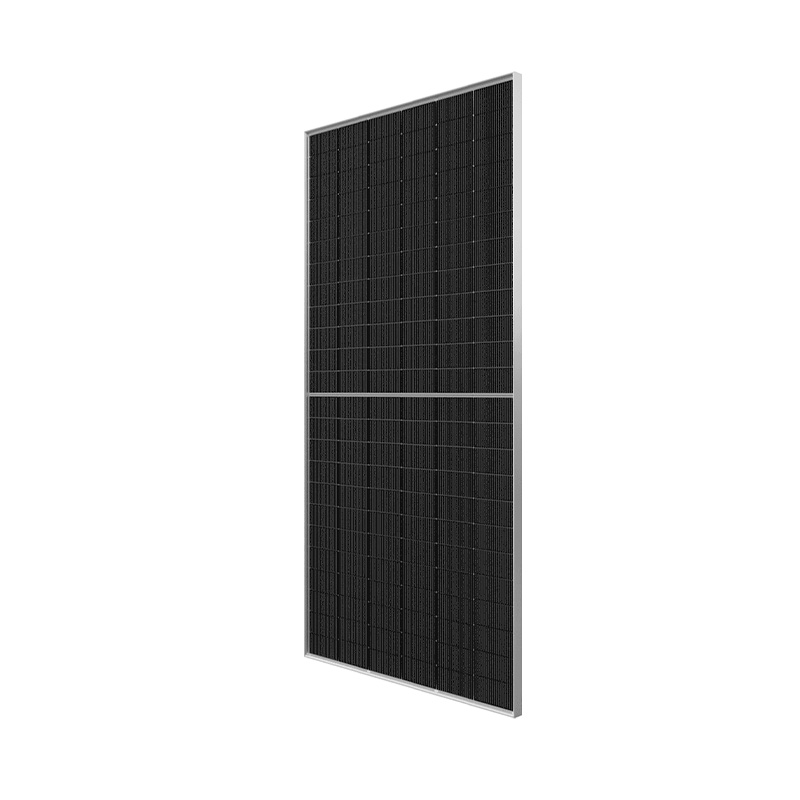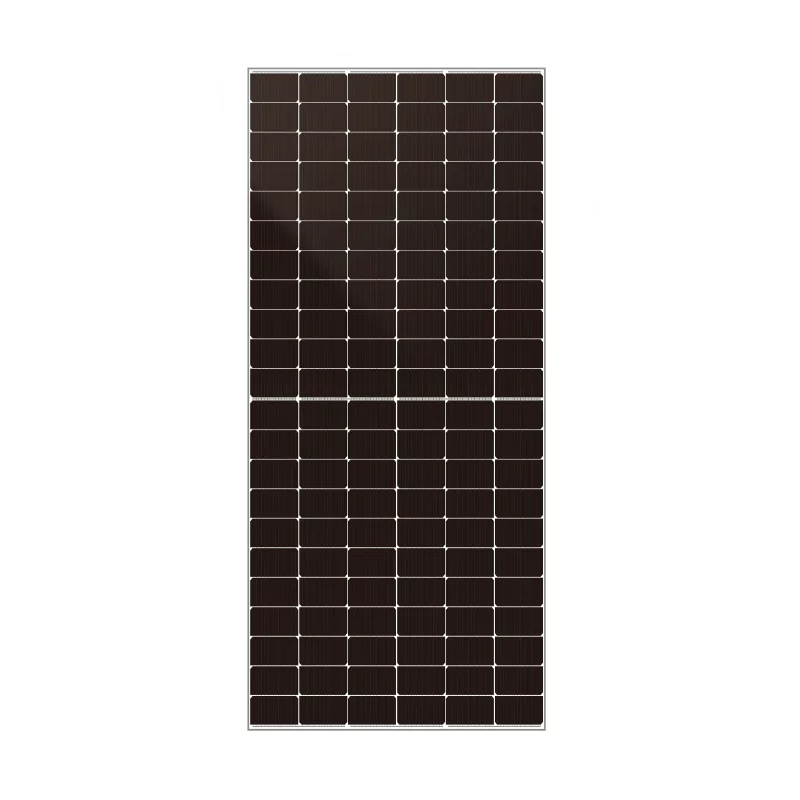မိုးခေါင်ပေါ်မှာရှိတဲ့ တောက်ပတဲ့ စတုဂံတွေကို သိလိုပါသလား။ နေရောင်ခြည် panel များအိမ်တွေနဲ့ လယ်ယာတွေကို စွမ်းအားပေးတယ်။ ဒါပေမဲ့ ဒါတွေထဲမှာ ဘာတွေဝင်လဲ။ Let’ အလွှာတွေကို ပြန်လွှားပါ။ ကျွန်ုပ်တို့’ အဓိက အစိတ်အပိုင်းတွေ၊ ပစ္စည်းတွေနဲ့ ဘယ်လိုပေါင်းစပ်တာကို ကြည့်မယ်။ သင်’ အစိမ်းရောင် စွမ်းအင်ကို စဉ်းစားနေရင် ဒါက ကူညီပါတယ်။ ကျွန်တော့နဲ့အတူ နေပါ။
နေရောင်ခြည် Panel ၏ အခြေခံအဆောက်အအုံများ
နေရောင်ခြည် panel များ’ t မှော် သူတို့က’ ပြန်လည်ထုတ်လုပ်ခဲ့တယ်။ တစ်ခုစီမှာ အဓိက အစိတ်အပိုင်းတွေ ရှိတယ်။ ဒါတွေဟာ နေရောင်ခြည်ကို ဖမ်းယူပြီး လျှပ်စစ်ကို ထုတ်လုပ်ဖို့ အတူတူ အလုပ်လုပ်ကြတယ်။
နေရောင်ခြည်ဆဲလ်များ: စွမ်းအင်ထုတ်လုပ်စက်များ
နေရောင်ခြည် ဆဲလ်တွေဟာ လေးကြီးတဲ့ လုပ်ငန်းတွေကို လုပ်ပါတယ်။ ၎င်းတို့ဟာ အလင်းကို ဓာတ်အား သက်ရောက်မှုကနေ စွမ်းအင်အဖြစ် ပြောင်းလဲတယ်။ အများစုဟာ ဆီလီကွန်ကို သုံးပါတယ်။ ဘာကြောင့်လဲ။ ဒါက’ ကျယ်ပြန့်ပြီး ထိရောက်ပါတယ်။
ဆဲလ်တွေဟာ အမျိုးအစားတွေ ရှိပါတယ်။ Monocrystalline: crystal တစ်ခုပါ၊ ထိရောက်ပေမဲ့ စျေးကြီးပါတယ်။ Polycrystalline: စျေးပေါတဲ့ ဖန်ရစ်မျိုးစုံပါ။ ပြီးတော့ ပါးလွှားတဲ့ ရုပ်ရှင်ပါ၊ ပျော့ပျော်နိုင်ပေမဲ့ စွမ်းအားနည်းပါတယ်။
Panel တစ်ခုမှာ ဆဲလ် ၆၀ (သို့) ၇၂ ခုဟာ ဆက်သွယ်ပါတယ်။ ပိုသစ်တွေဟာ ပိုကောင်းတဲ့ ထုတ်လုပ်မှုအတွက် ဆဲလ်တစ်ဝက်ကို သုံးတယ်။ WonVolt ကို’ s 72KUN နှစ်မျက်နှာပြင်ပြားများတွင် ဆဲလ် ၁၄၄ ခုပါဝင်သည်။ ၎င်းတို့ဟာ နှစ်ဘက်စလုံးမှ အလင်းကို ဖမ်းယူကြတယ်။ စွမ်းအင်ထုတ်လုပ်မှုကို မြှင့်တင်ပေးတယ်။
ကာကွယ်ရေး Glass ဖုံး
အပေါ်လွှာလား။ ခိုင်မာတဲ့ ဖန်ပါ။ ခက်ခဲတဲ့ အရာတွေပါ။ မိုးရေကို ကိုင်တွယ်ပြီး ဟာရီကင်းအင်အားအထိ လျှော့ပါ။
ဖန်က ရှင်းလင်းပါတယ်။ နေရောင်ခြည်ကို အများဆုံးဖြတ်စေတယ်။ အလင်းပြန်ဆန့်ကျင်သော အလွှာပေါင်းများသည် ကူညီပေးသည်။ ညစ်စက်တွေ တည်ဆောက်လား။ မိုးရေက ဆေးတယ်၊ ခြောက်သွေ့တဲ့ နေရာတွေလား။ လက်နဲ့ သန့်ရှင်းပါ။
အထူ: 3-4mm ပတ်လည်။ WonVolt သည် နှစ်ထပ်ဖန်ကို အသုံးပြုသည်၊ 2.0 2.0mm အပူခိုင်မာသည်။ ကျေးလက်များအတွက် ခံနိုင်ရည်ကို ထည့်သွင်းပေးသည်။
Insulation နှင့် Protection အတွက် Backsheet
အောက်ပိုင်းက ကာကွယ်လိုအပ်ပါတယ်။ Backsheet က ဒါကို လုပ်တယ်။ ပိုလီမာအလွှာတွေက စိုထွတ်မှုကို တားဆီးပြီး လျှပ်စစ်ကို ကာကွယ်ပေးတယ်။
ထိခိုက်မှုတွေကို ကာကွယ်ပေးတယ်။ သတ္တဝါတွေကို ထွက်ထားတယ်။ အဖြူရောင် သို့မဟုတ် အနက်ရောင်ဟာ မျက်နှာနှစ်ဖက်ပြားမှာ အလင်းကို ထင်ဟပ်ပေးတယ်။
အရည်အသွေးဟာ အရေးပါတယ်။ ဆင်းရဲတဲ့ နောက်ခံစာရွက်တွေဟာ ပျောက်ကျောက်ပြီး ကွဲပြားပါတယ်။ ကောင်းတွေဟာ ၂၅ နှစ်ကြာခဲ့တယ်။
အလူမီနီယံဘောင်: အားလုံးအတူတကွ Holding
ဘောင်က တည်ဆောက်မှုကို ပေးတယ်။ Anodized လူမီနီယမ်: ပေါ့ပါး၊ ခိုင်မာတဲ့၊ သံချောစွမ်းရည်။
တံဆိပ်ထားတဲ့ အစွန်းတွေပါ။ ခေါင်မိုးတွေ (သို့) မြေပေါ်မှာ တပ်ဆင်ပါတယ်။ WonVolt ဘောင်များ: anodized သတ္တုထုံ, 30mm အထူ။ လေနဲ့ နှင်းကို ကိုင်တွယ်တယ်။
အဓိကအစိတ်အပိုင်းများ၏ ဇယား
| အစိတ်အပိုင်း | ပစ္စည်း | အခန်းကဏ္ဍ | ပုံမှန်သတ်မှတ်ချက်များ |
| နေရောင်ခြည်ဆဲလ်များ | ဆီလီကွန် | နေရောင်ခြည်ကို လျှပ်စစ်အဖြစ် ပြောင်းလဲပါ | နှစ်မျက်နှာပုံစံများတွင် ဆဲလ် ၁၄၄ ခု |
| ဖန် Cover ကို | Tempered ဖန် | ဆဲလ်တွေကို ကာကွယ်ပါ၊ အလင်းကို ခွင့်ပြုပါ | 2-4mm အထူ, ဆန့်ကျင်အလှန် |
| နောက်ခံစာရွက် | ပိုလီမာ | ကာကွယ်ခြင်း၊ အစိတ်အပိုင်းများမှ ကာကွယ်ခြင်း | အလွှာပေါင်း၊ UV ခံနိုင်ရည် |
| ဘောင် | အလူမီနီယမ်အလွိုင်း | တည်ဆောက်မှုထောက်ပံ့မှု၊ တပ်ဆင်ခြင်း | Anodized, 30mm အနက်ရှိုင်း |
ဒီအစိတ်အပိုင်းတွေက ပြားတွေကို စိတ်ချရစေတယ်။
နေရောင်ခြည် Panel ထုတ်လုပ်မှုတွင် အဓိကပစ္စည်းများ
ပစ္စည်းတွေက စွမ်းဆောင်ရည်ကို တိုးတက်ပေးတယ်။ ဆီလီကွန်က အုပ်ချုပ်ပါတယ်။ ဒါပေမဲ့ အခြားသူတွေဟာ အခန်းကဏ္ဍတွေလုပ်တယ်။
ဆီလီကွန်: ကြယ်ပစ္စည်း
ကမ္ဘာ’ S crust ကိုလား။ ဆီလီကွန်ပြည့်နေတယ်။ ဒုတိယအများဆုံး အစိတ်အပိုင်းပါ။ ပြားတွေက ဒါကို သန့်ရှင်းပြီး သုံးတယ်။
လုပ်ငန်းစဉ်က ကွတ်တာဇ် သဲနဲ့ စတင်တယ်။ ၂၀၀၀ ဒီဂရီစင်တီဂရိတ်အထိ အပူပေးပါ။ polysilicon ကို ထုတ်လုပ်တယ်။ ပြီးတော့ ingots တွေပါ။
Monocrystalline ingots: Czochralski နည်းလမ်း။ အရည်ပျော်မှုကနေ ဖန်ရစ်ကို ဆွဲပါ။ ထိရောက်မှု: ၂၂% အထိ
Polycrystalline: ဆီလီကွန်ကို အရည်ပျော်ပြီး အအေးပါ။ ပိုစျေးပြီး ၁၈-၂၀% ထိရောက်မှု။
ပါးလွှားသော ဝေဖတ်များ: မိုက်ခရွန် ၁၅၀-၂၀၀ ဖက်စဖော်ရပ်နဲ့ ထည့်ထားပြီး အားသွင်းဖို့ ဘိုရွန်ပါ။
WonVolt ဟာ N-Type TOPCon ကို သုံးတယ်။ အဆင့်မြင့် ဆီလီကွန် နည်းပညာ၊ ပိုမိုမြင့်မားတဲ့ ထိရောက်မှု၊ မျက်နှာနှစ်မျက်နှာ အမြတ
အခြားအရေးပါသော ပစ္စည်းများ
EVA Encapsulant: အီသီလင်ဗီနိုင်းအာစီတက်။ ဆဲလ်တွေကို တံဆိပ်ထားတယ်။ ရှင်းလင်းပြီး ပျော့ပျောင်းပါ။ တုန်ခါမှု၊ စိုထွတ်မှုကနေ ကာကွယ်ပေးတယ်။
ချိတ်ဆက်မှု သေတ္တာ: ဒိုဒ်တွေနဲ့ ပလပ်စတစ်။ စွမ်းအင်စီးဆင်းမှုကို စီမံခန့်ခွဲပါတယ်။ ရာသီဥတုခံနိုင်ရန် IP68 သတ်မှတ်ထားသည်။
ဘတ်စ်ဘားတွေနဲ့ ကြိုးတွေ၊ ကြေးနီ (သို့) ငွေတွေပါ။ ဆဲလ်တွေကို ချိတ်ဆက်ပါ။ WonVolt တွင် MBB (Multi Busbar): ပိုကောင်းသော လျှောက်ဆက်မှု၊ အရိပ်လျော့နည်း။
ဆန့်ကျင်အလောင်အလွှာ: ဆီလီကွန် nitride ။ အလင်းပြန်မှု ဆုံးရှုံးမှုကို ၃-၅% လျှော့ချတယ်။
ပစ္စည်းအကျိုးကျေးဇူးများနှင့် ပတ်သက်၍ အမှတ်များ:
ဆီလီကွန်: ကြီးမားပြီး ပြန်လည်သုံးနိုင်ပါတယ်။
အလူမီနီယမ်: အလေးချိန်ပါး၊ အစားခံနိုင်ရည်။
ဖန်: ခံနိုင်ရပြီး ပွင့်လင်းပါ။
ပိုလီမာများ: ပျော့ပျောင်းနိုင်ပြီး ကာကွယ်ပေးသည်။
အနည်းငယ်မှုလား။ ရှားပါ။ ဆီလီကွန် ထောက်ပံ့မှုဟာ တည်ငြိမ်ပါတယ်။ ပြန်လည်သုံးစွဲမှုဟာ တိုးလာပါတယ်။
နေရောင်ခြည် Panel များကို ဘယ်လိုထုတ်လုပ်သည်
သဲကနေ panel အထိ။ ဒါက’ ခရီးတစ်ခုပါ။ နည်းပညာမြင့် စက်ရုံတွေက ဒါကို ကိုင်တွယ်ပါတယ်။
ကုန်ကြမ်း ဆီလီကွန်မှ ဝေဖရ်များအထိ
ကွတ်တာဇ် တွင်းထုတ်လုပ်ခဲ့တယ်။ 99.9999% ဆီလီကွန်အထိ သန့်ရှင်းထားသည်။ အရည်ပျော်ပြီး အစုပ်တွေအဖြစ် သတ္တုဖြစ်လာတယ်။
ဝေဖယ်တွေအဖြစ် တွေ့ခဲ့တယ်။ စိန်ကြိုးကို တိကျစွာ ဖြတ်တောက်တယ်။ အခု အမှိုက်အနည်းဆုံးပါ။
အလင်းကို ချိတ်ထားဖို့ ပုံစံထားပါတယ်။ p-n ချိတ်ဆက်မှုအတွက် ဆေးထိုးထားတယ်။
နေရောင်ခြည်ဆဲလ်များ ဖန်တီးခြင်း
Wafers တွေဟာ အလွှာတွေ ရတယ်။ မျက်နှာပြင်ပုံနှိပ် အဆက်အသွယ်များမီးဖိုများတွင် မီးဖိုက်ထားသည်။
ထိရောက်မှုအတွက် စမ်းသပ်ခဲ့တယ်။ အဆင့်အရ စီစဉ်ထားပါတယ်။
TOPCon ဆဲလ်များ: လမ်းခြေအောက်ဆိုက်အလွှာ။ အီလက်ထရွန်ဆုံးရှုံးမှုကို လျှော့ချတယ်။ WonVolt ကို’ s 580-605W panel များမြင့်မားသောထုတ်လုပ်မှုရိုက်ခဲ့သည်။
အပြည့်အဝ Panel ကိုစုစည်းခြင်း
အလွှာ: ဖန်, EVA, ဆဲလ်, EVA, နောက်ပိုင်းစာရွက်။
အပူအောက်မှာ လွှာထားတယ်၊ လေအိမ်အောက်မှာပါ။ ချိတ်ဆက်မှုတွေက ပြင်းထန်ပါတယ်။
Frame ကို ထည့်သွင်းပါတယ်။ ချိတ်ဆက်မှု သေတ္တာကို ထည့်သွင်းထားပါတယ်။
စမ်းသပ်ခဲ့သည်: စွမ်းအင်အတွက် Flash၊ အကွာတွေအတွက် EL။
WonVolt ဟာ တစ်ခုလျှင် ၃၆ ခုကို ထုပ်ပိုးထားတယ်။ သင်္ဘောပို့ရန် အသင့်ပါ။
လုပ်ငန်းစဉ် eco? စွမ်းအင်စွမ်းအားကြီးပါတယ်။ ဒါပေမဲ့ ပြားတွေဟာ ၁-၂ နှစ်အတွင်းမှာ ပြန်ပေးပါတယ်။
နေရောင်ခြည်စွမ်းအင်ပြားများသည် ကျေးလက်ပြန်လည်အသက်ရှင်မှုအတွက် ဘာကြောင့် ကိုက်ညီ
တရုတ်နိုင်ငံဟာ ကျေးလက် နေရောင်ခြည်ကို တွန်းပေးတယ်။ စာရွက်စာတမ်းများ show “ အရှေ့လေက” မြင့်တက်နေတယ်။ မူဝါဒတွေဟာ ဖြန့်ဖြူးထားတဲ့ ပြန်လည်သုံးနိုင်တဲ့ စွမ်းအင်ကို တိုးမြှင့်ပေးတယ်။
ကျေးလက်ဒေသများ: လယ်ယာများ၊ သတ္တုတွင်း။ နေရောင်ခြည်က ကုန်ကျစရိတ်တွေကို လျှော့ချတယ်။ WonVolt ဖြေရှင်းနည်းများ: 3KW-30KW အိမ်သာ, 50KW-300KW စီးပွားရေး။
အမြင့်ဆုံး ရေချိုးခြင်း၊ ထောက်ပံ့စွမ်းအင် ကိုယ်ပိုင်စားသုံးမှု။
အကျိုးကျေးဇူးများ:
ကွန်ရက်တွေကို အားကောင်းပါ။
အားသွင်းစခန်းတွေ တည်ဆောက်ပါ။
လမ်းတွေကို တိုးတက်ပေးပါ၊ ရေကို တပ်ဆင်ပေးပါ။
အစိမ်းရောင် ပြောင်းလဲမှုပါ။ ရုပ်ကြွင်းအာရုံစိုက်မှုကို လျှော့ချပေးတယ်။
နေရောင်ခြည်စွမ်းအင်ပြားများ၏ ပတ်ဝန်းကျင်နှင့် သက်ဆိုင်ရာ ဘက်က
ရေရှည်တည်တံ့လား။ ဟုတ်ပါတယ်။ သန့်ရှင်းသော စွမ်းအင်အသုံးပြုမှုတွင် ထုတ်လွှတ်မှုမရှိပါ။
ပစ္စည်းတွေ များပါတယ်။ သဲကနေ ဆီလီကွန်ပါ။ အလူမီနီယံကို ပြန်လည်သုံးပါတယ်။
သက်တမ်း: 25-30 နှစ်။ WonVolt အာမခံ: 12 နှစ်ပစ္စည်းများ, 30 နှစ်စွမ်းအား။
ပြန်လည်သုံးစွဲခြင်း: ကြီးထွားခြင်း။ ၉၅% ပစ္စည်းတွေကို ပြန်လည်ရယူပါ။ အစီအစဉ်တွေ တိုးချဲ့တယ်။
ရုပ်ကြိတ်တွေနဲ့ နေရောင်ခြည်ဟာ CO2 ကို လျှော့ချတယ်။ ပြားတစ်ခုက သက်တမ်းတစ်ခုလုံး တန်ချိန်ကို လျော်ကြေးပေးတယ်။
စိန်ခေါ်မှုများ: သတ္တုတွင်းရေး သက်ရောက်မှုများ။ ဒါပေမဲ့ တိုးတက်လာတယ်။
WonVolt ကို ရှာဖွေပါ: သင့်ရဲ့ စိတ်ချရတဲ့ နေရောင်ခြည် Panel ကို ပေးသွင်းသူ
အရည်အသွေး ပြားများ လိုအပ်သလား။ WonVolt ကို ပေးပို့ပါတယ်။ ၂၀၁၆ ခုနှစ်တွင် တရုတ်နိုင်ငံ ဟေဖီမြို့တွင် တည်ထောင်ခဲ့သည်။ Wor-biz ၏ သမီးလုပ်ငန်း (၂၀၀၀) ။ N-Type TOPCon panel များတွင်အထူးပြုခြင်း: တစ်မျက်နှာ၊ နှစ်မျက်နှာ၊ 450W-720W ။ ထိရောက်မှုမြင့်မားပြီး မျက်နှာနှစ်ဘက်က အပိုထုတ်လုပ်မှုအတွက်ပါ။ နိုင်ငံ ၉၀ သို့ တင်ပို့ခြင်း။ ၂၀၂၃ လက်ဝယ်မှု: အမေရိကန်ဒေါ်လာ ၅၀ သန်း။ ဝန်ထမ်း ၈၇ ဦး၊ နည်းပညာ ကျွမ်းကျင်သူ ၂၄ ဦး။ လည်းစွမ်းအင်သိုလှောင်မှု: 3KW-300KW ။ အသေးစိတ်အချက်အလက်များအတွက် wonvolt.com ကိုစစ်ဆေးပါ။
အဆုံးသတ်ချက်
နေရောင်ခြည်စွမ်းအင်ပြားတွေဟာ ရိုးရှင်းတဲ့ ပစ္စည်းတွေကို စမတ်နည်းပညာတွေထဲမှာ ရောစပ်ပေးတယ်။ ဆီလီကွန ၎င်းတို့ဟာ နေရောင်ခြည်၊ စွမ်းအင်ရဲ့ အသက်တွေကို ဖမ်းယူကြတယ်။ ပတ်ဝန်းကျင်နဲ့ သဟဇာတပါ၊ ရေရှည်ပါ။ ကျေးလက် နေရောင်ခြည်တွေ တိုးလာတဲ့အခါ နားလည်မှုဟာ မှန်ကန်တဲ့ ရွေးချယ်မှုကို ကူညီပေး
FAQ များ
Q1 ကို: နေရောင်ခြည်ပန်းကန်တွေဟာ အဓိကအားဖြင့် ဘာကနေ လုပ်ထားတာလဲ။
နေရောင်ခြည်စွမ်းအင်များကို အဓိကအားဖြင့် ဆီလီကွန်ဆဲလ်များနှင့် ဖန်၊ ပိုလီမာများနှင့် အလူမ ဒါတွေက ဖမ်းယူပြီး ကာကွယ်ပေးတယ်။
Q2 ကို: ဆီလီကွန်ဟာ နေရောင်ခြည်စွမ်းအင်ပြားတွေ လုပ်ထားတဲ့ အရာတွေကို ဘယ်လို သက်ရောက်လဲ။
ဆီလီကွန်ဟာ နေရောင်ခြည်ပန်းကန်တွေ လုပ်ထားတဲ့ ဆဲလ်တွေကို ဖွဲ့စည်းပေးတယ်။ သန့်ရှင်းထားပြီး နေရောင်ခြည်ကနေ လျှပ်စစ်ပစ္စည်းအတွက် ဆေးထိုးထားပါတယ်။
Q3 ကို: နေရောင်ခြည်စွမ်းအင်ပြားတွေကို ရေရှည်တည်တံ့တဲ့ ပစ္စည်းတွေကနေ လုပ်ထားတာလား။
ဟုတ်ပါတယ်၊ နေရောင်ခြည်ပန်းကန်တွေ လုပ်ထားတဲ့ ဆီလီကွန်နဲ့ အလူမီနီယံလို ပစ္စည်းတွေဟာ ကြီးမားပြီး ပြန
Q4 ကို: နေရောင်ခြည်စွမ်းအင်ပြားတွေ ဘယ်အရာကနေ လုပ်ထားတာမှာ ဖန်ဟာ ဘယ်ကဏ္ဍကို ကစားလဲ။
ဖန်က နေရောင်ခြည်စွမ်းအင်ပြားတွေ လုပ်ထားတဲ့ ဆဲလ်တွေကို ဖုံးထားတယ်။ ခံနိုင်ရည်အတွက် ခံနိုင်ပြီး အလင်းအတွက် ရှင်းလင်းပါတယ်။
Q5 ကို: ကျေးလက်ဒေသတွေဟာ နေရောင်ခြည်စွမ်းအင်ပြားတွေ လုပ်ထားတာကနေ အကျိုးခံစားနိုင်လား။
တကယ်ပါ။ နေရောင်ခြည်စွမ်းအင်ပြားတွေကို ဝတ်စုံလယ်ယာတွေကနေ လုပ်ထားတဲ့ ခံနိုင်တဲ့ အစိတ်အပိုင်းတွေဟာ စွ



